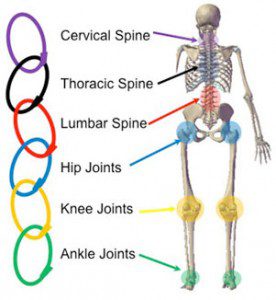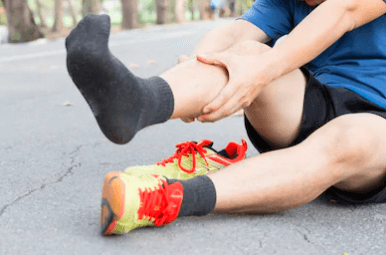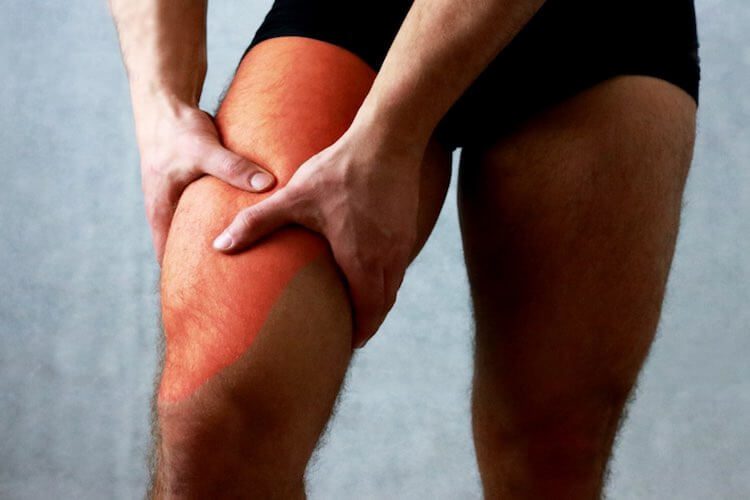
Pain occurs at the point where these adaptations lead to overuse of another moving part. Commonly, where it is tight does not itself cause pain. It is the surrounding moving parts that have to carry the extra load because the tight bit does not do its share.
This could mean someone may experience knee pain, low back pain or even a headache from an asymmetrical workload in another part of the body.
Low back problems can lead to or add to shoulder or neck pain and there is no rule to say that your pain may present at only one spot at a time. That’s why so many of us feel pain on one side of out back or neck one day, then it moves to the other or seemingly spreads to other parts.
Our body as a whole relies on all of our moving parts to do their share of work as they were designed to do. Injury at any one point can cause problems elsewhere in the kinetic chain and the complex engine may seize up at any point.
Deficiencies in efficient movement are what physiotherapists are trained to look for, Once found we then need to free up any physical barrier to good movement and teach you how to move efficiently again so as to not only alleviate your presenting pain but get you moving well so as to prevent a recurrence.
Lesa Hogan
Sports Focus Physiotherapist



